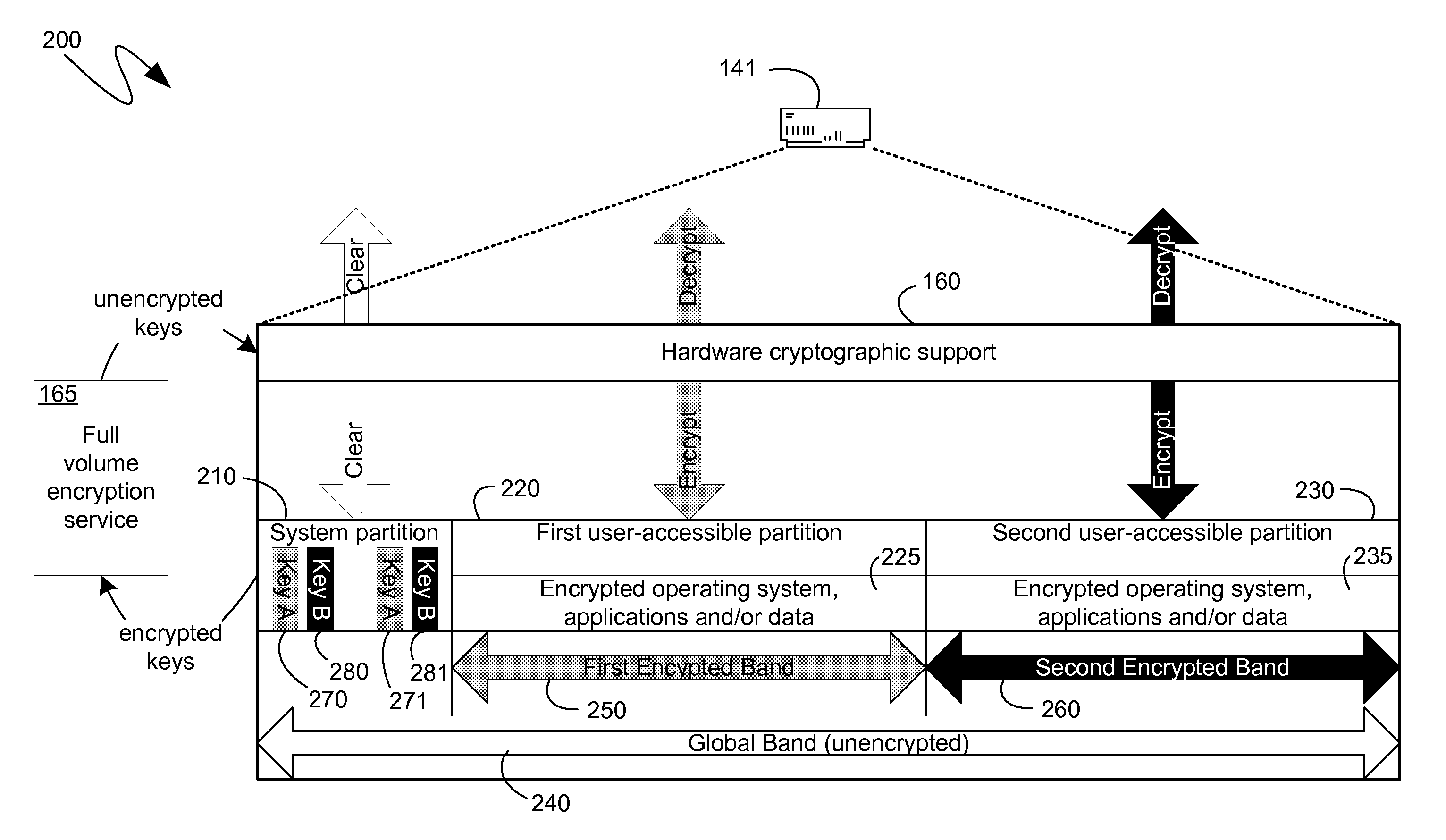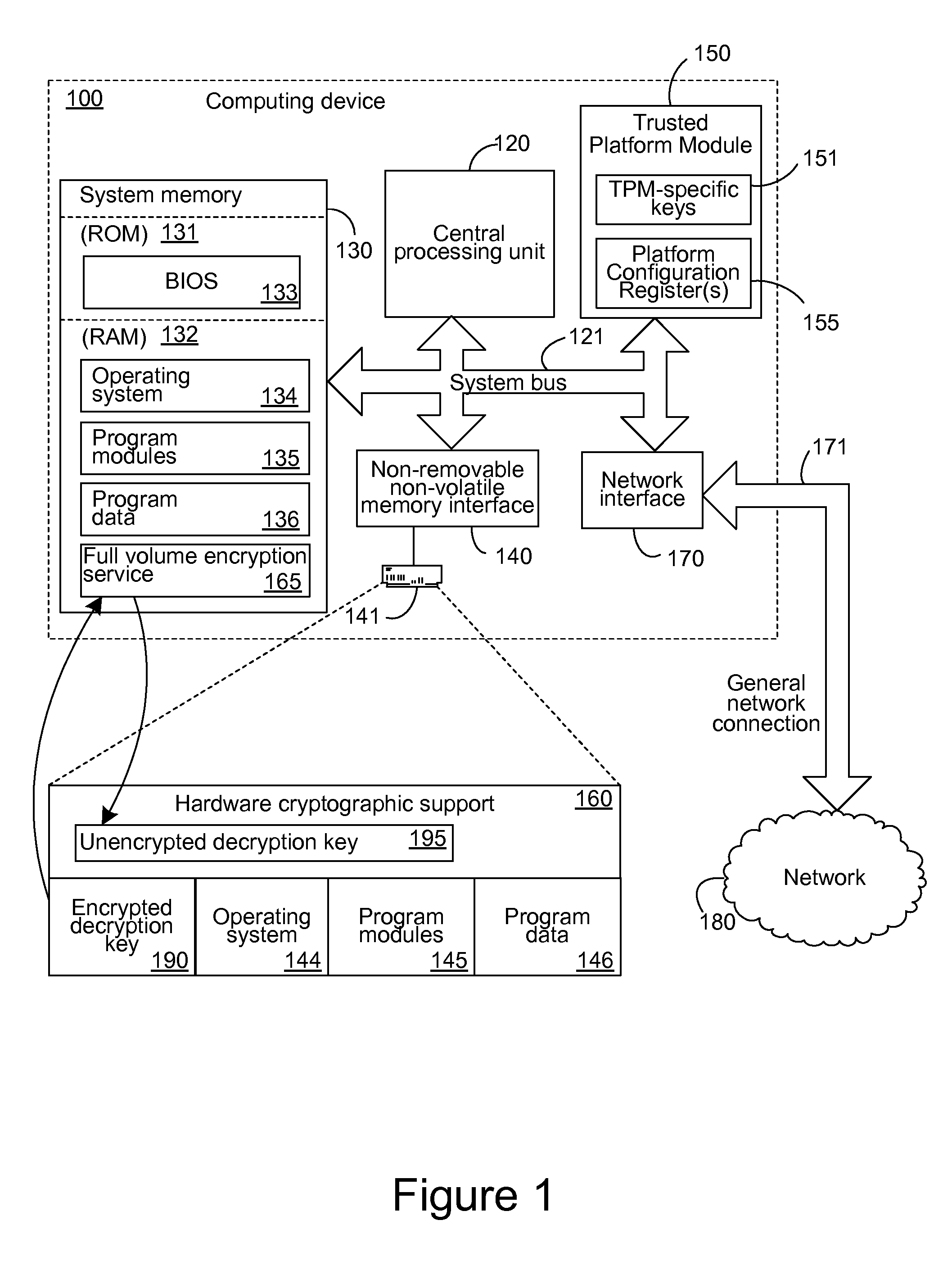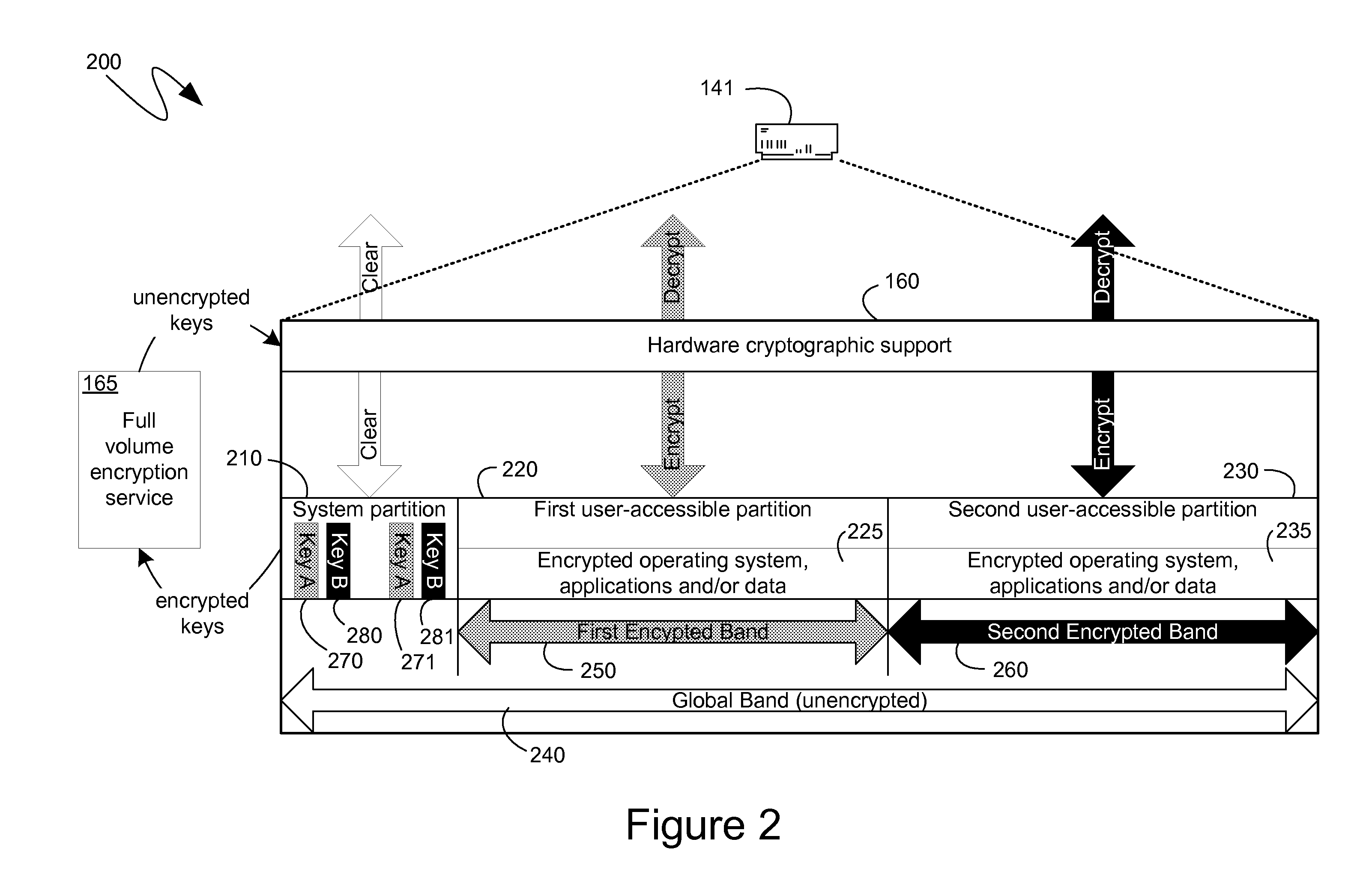External encryption and recovery management with hardware encrypted storage devices
a technology of encryption and recovery management, applied in the direction of unauthorized memory use protection, instruments, error detection/correction, etc., can solve the problems of computing device itself being lost, introducing risks not often associated with portable computing devices, and reducing the efficiency of actual encryption
- Summary
- Abstract
- Description
- Claims
- Application Information
AI Technical Summary
Benefits of technology
Problems solved by technology
Method used
Image
Examples
Embodiment Construction
[0024]The following description relates to the management, by computer-executable instructions executing on a computing device, of keys used to encrypt and decrypt data by a hardware encrypting storage device. Because the keys can be managed by computer-executable instructions executing on a computing device, they can be protected and encrypted by those instructions and then stored on the storage medium without any further encryption by the hardware encrypting storage medium. Such non-hardware-encrypted storage can occur within a system partition or other reserved partition, or it can occur when an encryption band associated with a partition is sized slightly smaller than the partition, resulting in areas near the beginning and end of the partition that are not covered by the encryption band and are, therefore, not encrypted by the hardware encrypting storage device. Additionally, a flag or bit can be defined as an encryption bit that can specify to the hardware encrypting storage d...
PUM
 Login to View More
Login to View More Abstract
Description
Claims
Application Information
 Login to View More
Login to View More - R&D
- Intellectual Property
- Life Sciences
- Materials
- Tech Scout
- Unparalleled Data Quality
- Higher Quality Content
- 60% Fewer Hallucinations
Browse by: Latest US Patents, China's latest patents, Technical Efficacy Thesaurus, Application Domain, Technology Topic, Popular Technical Reports.
© 2025 PatSnap. All rights reserved.Legal|Privacy policy|Modern Slavery Act Transparency Statement|Sitemap|About US| Contact US: help@patsnap.com



